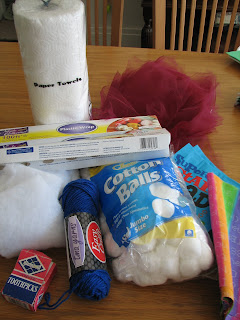The overall idea is this - you create some sort of packaging to protect a raw egg. The protected egg is then carried to the top of a tall ladder or building and dropped to the ground. The goal is to have the egg remain in tact.
There are lots of variations....
...you can restrict the dimensions of the finished carrier.
...you can restrict the weight of the finished carrier.
...you can restrict the materials allowed in construction.
...or you can make it a free-for-all.
A Google search will provide you with lots of ideas on how you might want to run your egg drop. It will also provide you with grading guidelines and rubrics, if you're interested in using this activity during the school year.
The younger the students, the fewer restrictions I'd place on the project.
When we ran our science camp for elementary students, we had small boxes for each person/group to use as a starting point and then a whole variety of supplies, such as
- yarn
- fabric
- packing peanuts
- sponges
- cotton balls
- newspaper
- balloons
- straws
- popsicle sticks
- cotton batting
- anything else we could think of
Students had one session to build. For testing, a custodian carried the eggs in their carriers to one section of roof and dropped them for us. We dropped them onto a black-top surface. The kids were really excited to see how each would fare.
Make sure you have a way to wash away any raw egg (i.e. a hose or bucket of water) that may get on to things.

